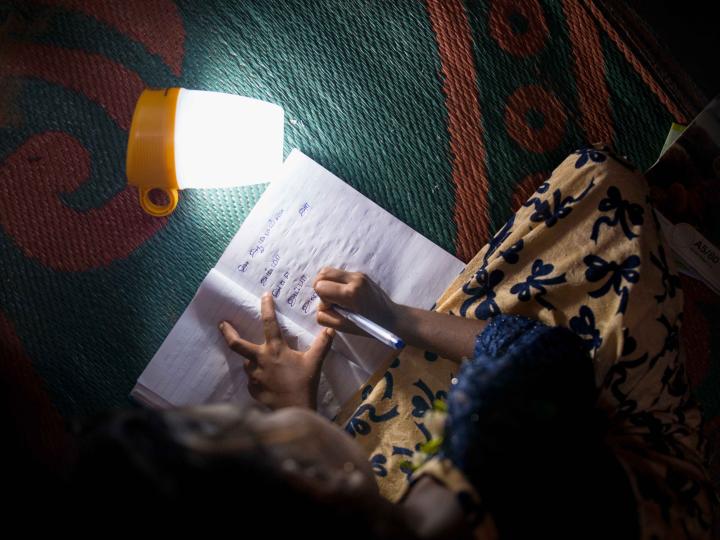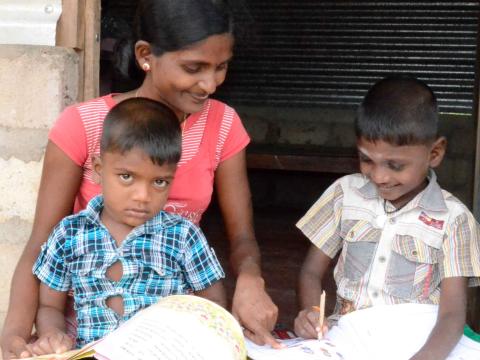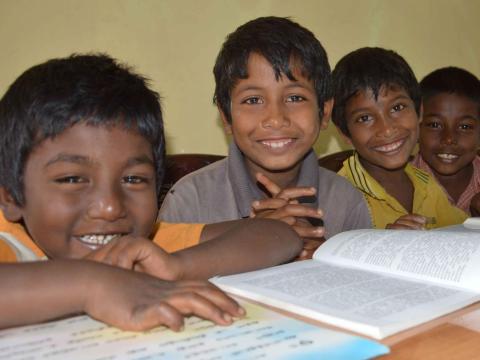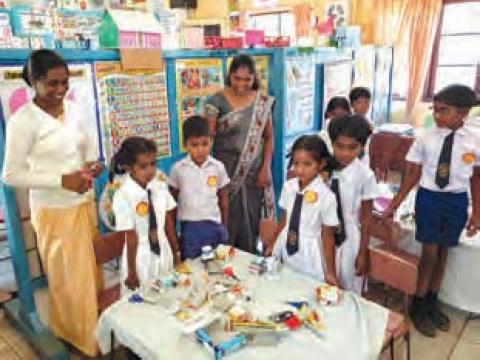
Age-Appropriate Competency Development
World Vision’s aspiration for all children is for them to be “Educated for Life” — from birth all the way through and beyond adolescence.
We believe education plays an important role in breaking the cycle of poverty and helps children reach their full potential. When they have access to education, children read and write; are able to make good judgments, can protect themselves, manage emotions and communicate ideas well.
We work with children aged 3-10 years to achieve age-appropriate competencies through the educational structures. We also focus on helping them become life-long learners and be equipped with essential life skills.
Through our project models, we also empower parents and caregivers to help build enabling environments for children’s education and become more intentionally involved in their holistic development and learning in school and at home.
Our Project Models…

Learning Roots
Learning Roots supports parents and caregivers, who are children’s first educators in learning in supporting the development of their early childhood.
The earliest years of a child’s life are a window of opportunity to support the emergence of literacy, numeracy and life skills that will form the foundation for a lifetime of learning and fulfilment.
Parents and preschool teachers are provided with awareness and training on supporting social and emotional development of their young children. The preschools are also supported to maintain minimum standards to help children become school-ready.

Unlock Literacy
Unlock Literacy focuses on helping children who are in grades 3 to 5 (ages 8-10) who struggle to read and comprehend by improving five core skills of reading acquisition: letter knowledge, sounding out words, reading fluency, vocabulary, and comprehension.
Identified children are enrolled in fun out-of-school reading clubs managed by trained volunteers. Reading clubs are designed to develop the holistic personality of the child.
Parents and the community are also mobilised in building a conducive environment for literacy improvement of children. This project model covers all children in the area and supports.
Last year...

For this, we partnered with…

We Impacted

We contributed to...

4.1.1 Proportion of children and young people: (a) in grades 2/3; (b) at the end of primary; and (c) at the end of lower secondary achieving at least a minimum proficiency level in (i) reading and (ii) mathematics, by sex.
From our total budget we spent...
LKR
46,396,981
We worked in…
Kalpitiya | Nawagaththegama | Kiran |Mundalama | Vaharai | Trinco South | Kandy | Nuwara Eliya | Ambagamuwa | Bibile | Chankanai | Karaichchi | Lunugala | Mannar | Meegahakiula | Mullaitivu | Muthur | Navithanveli | Rideegama | Welikanda

Kelliewatte Tamil Vidyalayam
Kelliewatte Tamil Vidyalayam had low attendance and no new admissions. It was also called a "forest school".
That is when World Vision introduced child-friendly classrooms. The classrooms were renovated to ensure space, ventilation, and light according to required standards. Every classroom has learning corners for different subjects, where the students will be able to obtain more information.
"In 2017, after 12 years in our school's history, a student received 164 marks in the grade 5 scholarship examination. Today the pass rate also has increased to 84%,"beams Peter Roy Gabriel, the principal of Kelliewatte Tamil Vidyalayam.
Today, it is a model school visited even by officials from other education zones. World Vision has planned to construct 14 child friendly classrooms in the central province alone.